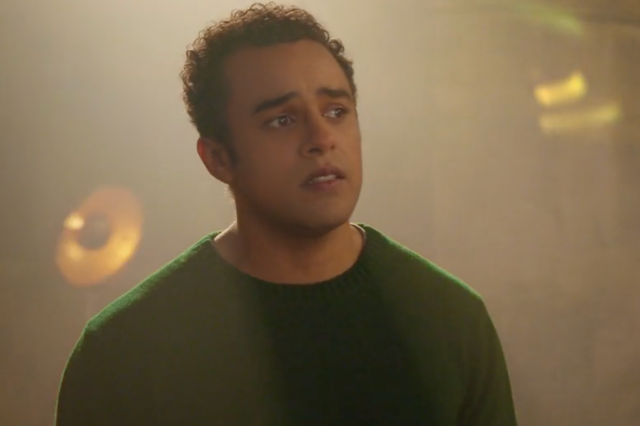Matt Trueman: Is it time to rethink theatre on screen?
We need to work out the rules, rather than ‘plonking cameras around an auditorium and pressing record’

© Jonathan Keenan
It's been six years since the first NT Live beamed Helen Mirren's Phèdre to cinemas nationwide and, since then, a second format has emerged, ditching any pretence of liveness. NT Live now has lucrative Encore screenings – Danny Boyle's Frankenstein came back to life again last Halloween – and Digital Theatre makes its recordings available on demand in perpetuity. Peake's Hamlet hit the big screen a full five months after her last performance.
So why is it still shot so plainly and edited so simply? Why is the cinematography so bland? We get close ups and wide-angles, to see the actors and their relationship to one another. Occasionally, there's a bit of business: zooming into a detail or a birds-eye view. Last night, we got a weird slow-mo shot.
Mostly though, it's little more than reportage: the camera picks up the action and communicates it to the cinema audience. "The key is to remember it's not just a play," the screen director Tim van Sommeren once told me. "It's tonight's performance at the Olivier theatre."
Except, of course, when it's not – as with last night's screening of last November's Hamlet. Surely there's time to do something different? We're not watching an event. We're watching art. Art isn't just content, it's a way of seeing. It's how as well as what. Theatre on screen often feels like a chapter-by-chapter synopsis. It's a serviceable substitute, but it knows it falls short. It's a skeleton, not a fully-fleshed creation. Why not?
'In theatre, you're your own DOP'
Filmed theatre is a hybrid artform: not exactly theatre, but nor cinema either. Isn't it time we started treating it accordingly, working out its rules, not just plonking cameras around an auditorium and pressing record?
Because its rules are different. In theatre, you're your own DOP. You watch what you need to make sense of a production. In the cinema, the camera decides for you. You rely on the screen director. It's their job to convey the meaning of a production. Margaret Williams, Hamlet's screen director, caught the plot superbly – reaction shots for Claudius during the Mousetrap and Polonia yawning through the Player King. She got some of its tactility too: when Claudius put a necklace on his new wife it looked, for a second, like he might garrotte her.
Where the screen Hamlet struggled, though, was with the production's dramaturgy. What was the book Hamlet was brandishing? (Machiavelli's The Prince, if you really squinted.) Was there significance in the multi-coloured clothing worn by the players that later came back as the earth for Ophelia's grave? The camera didn't stress any. What was behind director Sarah Frankcom's use of cross-casting and androgyny? True, the production itself might have been muddled – and, certainly, Frankcom hopped between genderblind, cross-casting and post-gendered portrayals – but was there method in the madness? (Women dressed as men; men addressed as women.) In the theatre, you've the freedom to figure it out for yourself. On screen, we need – literally – pointing in the right direction.
Then there was Maxine Peake. She's one of those actors blessed with extraordinary presence; an inherently theatrical actor, capable of standing in a room with us, eyeballing us, colluding with us. She can run an electric current through a room. There's no escaping the fact of her voice: cracked and slurred, like a week-old cold drunk on cough medicine. The camera disarms her of all that.
You could see her doing it, but you couldn't feel it. Her Hamlet was a saboteur of sorts: not quite breaking the fourth wall, but knocking up against it. She'd ruffle the hair of other actors and stomp through scenes at will. In the room, that's electric: there's a danger of her toying with the production, scoffing at it and almost threatening to derail it. On screen, it looked indulgent and overdone; fidgety and gurning and false. The camera suits a certain style of performance – polite and level and naturalistic. Can it handle the metaphor and magic of Peter Brook or Complicite? The visceral thump of Sarah Kane? The swaggering semiology of Thomas Ostermeier? I'm not sure.
One of the worries, when NT Live was first introduced, was that the live broadcast would corrupt the live event; that designers and directors would work with the camera in mind, not the live audience; that actors would adjust their performances to fit the new medium. That hasn't happened yet – but maybe it should. Other artforms, live music and sport, have adjusted to fit the camera. Pop concerts – even one-off festival performances – have huge, bold designs. Big screens straddle the stage. Cricketers and boxers walk out to theme tunes. European football matches show in-game replays. So how might theatre adopt itself for the screen – and can it do so without compromise?
See Also: Research finds that NT Live has 'no negative impact' on regional theatregoing












